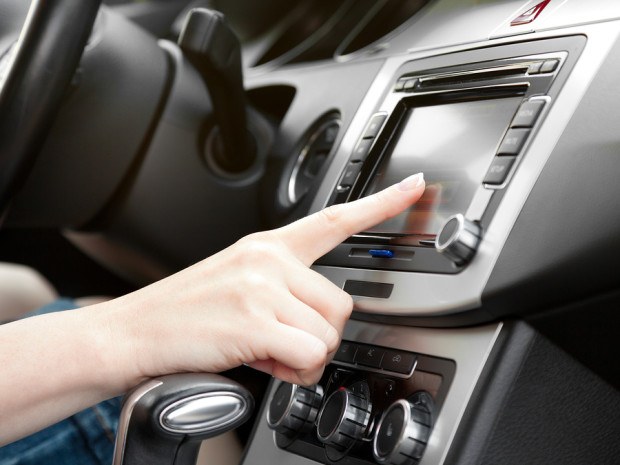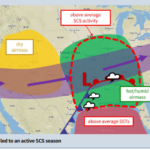When it comes to dashboard displays that are more like smart phones, two things are clear: customers want them, and automakers are intent on supplying them.
But are they really a good idea?
Car companies answer with an emphatic yes. They say outsized dashboard displays that behave more like smart phones will boost revenue and attract buyers. And they also insist the new screens will make driving less dangerous, because of well-integrated voice controls and large touch screens that will keep drivers from fumbling with more dangerous mobile phones.
But the increasingly elaborate screens have also sparked a broad debate about how much technology is appropriate in a car.
“I think they [the screens] raise serious public safety questions,” said Joe Simitian, the former California lawmaker who spearheaded the state’s laws on phone use while driving. “From a legislative standpoint, this is going to be something legislators struggle with for years to come.”
“You can’t be looking at a screen and be looking at the road at the same time,” said David Strayer, a professor of cognition and neural science at the University of Utah, who has written several studies on distracted driving. The screens “are enabling activities that take your eyes off the road for longer than most safety advocates would say is safe.”
His research shows that reading the average text message-a function some of the screens support-takes four seconds, far longer than what he considers safe.
But for automakers and their customers, the souped-up screens are proving irresistible.
In an Audi A3, for example, drivers who sync their phones with their cars can check for mentions of themselves on Twitter and see those tweets on their dashboards-although not their full Twitter streams. They can upload photos taken on smart phones and request mapping to the place the photo was taken. Text messages pop up on the dashboard, in addition to being read out loud.
“If you don’t provide something that is useful, people will just use their smartphones, and we all know that’s the biggest driver distraction there is,” said Mark Dahncke, a spokesman for Audi.
Up to now, dashboard technology hasn’t factored highly into most car buying decisions, but carmakers expect it to become increasingly important over the next 3-5 years.
A recent study by the market research company J.D. Power found that about 15 percent of consumers rule out buying a car if it lacks the latest technology, compared with just 4 percent a year ago.
Little Regulation
Currently, dashboard displays are only lightly regulated. Many states forbid the airing of non-navigational videos by drivers while cars are in motion, except for safety video systems designed to help with backing up and other tasks.
Federal motor vehicle standards stipulate only a few rules, including that the brightness on displays be adjustable.
The National Highway Traffic Safety Administration has issued driver-distraction guidelines for dashboard displays in moving cars. They advise against displays that include photographs or moving images unrelated to driving, and suggest that drivers shouldn’t need to tap a button or key more than six times to complete a task. But so far, the guidelines are voluntary, with automakers under no obligation to comply.
The auto industry has issued voluntary guidelines of its own. But in many cases, industry standards fall short of the government’s. For example, the industry guidelines say that drivers should be able to complete tasks on the displays in a series of single glances that generally take no more than 2 seconds each, for a total of 20 seconds. But the government guidelines advise that drivers should be able to complete tasks in a series of 1.5 or 2 second glances, for a total of no more than 12 seconds.
Some critics find even that standard too lax.
“It should be set up so people can do it in just four glances,” says Henry Jasny, vice president of the Advocates for Highway and Auto Safety, a Washington, D.C.-based group funded by insurers and others. His group has asked for the government guidelines to become law, figuring that even imperfect mandatory rules would be better than no requirements, and that during the rulemaking process, the organization can fight for more stringent regulation.
Auto manufacturers are incorporating popular smartphone features into displays in different ways.
Some, such as Hyundai, are simply making their displays compatible with Android and iOS, the smartphone software from Google and Apple, so drivers can see a bare-bones version of their phone on the screen. Other companies, including Tesla, are creating elaborate systems that don’t rely on syncing with phones, but replicate many of the things consumers might use their phones to do, such as checking for nearby restaurants.
Making the in-dash displays as responsive as possible with minimal glances away from the road is a major goal, says Danny Shapiro, senior director of automotive for Nvidia, a company that makes hardware and software for displays featured in Audis and Teslas.
“What we’re doing is developing graphics that are intuitive, so you can gesture or swipe or zoom,” he said. “Something that responds like that, and is big, is much safer than a smartphone.”
So far, insurers haven’t taken a stand on the new souped-up displays. A large, interactive display on the dashboard would neither increase nor decrease policy rates, said a spokeswoman for the Insurance Information Institute, unless it was considered valuable enough to increase the risk of theft.
(Reporting by Sarah McBride and Paul Lienert; Editing by Sue Horton)
Topics Auto Legislation Personal Auto




















 Report: Insurers Keen on Replacing Legacy Systems Seek More Agility
Report: Insurers Keen on Replacing Legacy Systems Seek More Agility  KCC: Frequent SCS Activity Emphasizes Need for Latest Modeling Tech
KCC: Frequent SCS Activity Emphasizes Need for Latest Modeling Tech  Study Urges Rethinking of Disaster Management in Era of Compounding Events
Study Urges Rethinking of Disaster Management in Era of Compounding Events  Insurers Face Business Interruption Claims After Global Tech Outage
Insurers Face Business Interruption Claims After Global Tech Outage 













